#National Archives Catalog
Text
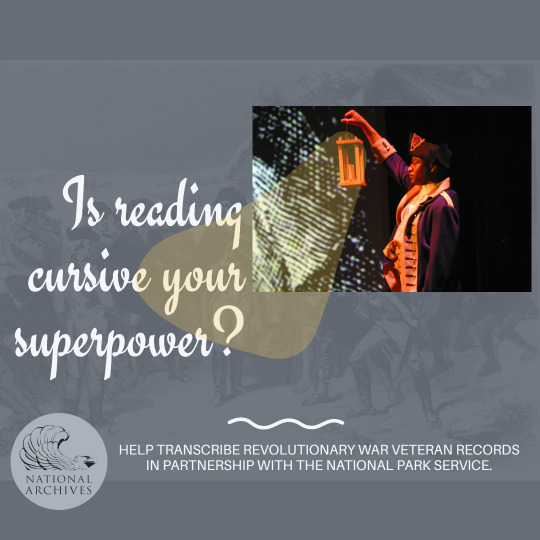
“I was in Monmouth battle and many others and received a wound in my face from a ball, the scar of which is still visible.” – Robert Green, veteran
Robert Green gave this testimony at the age of 65 when applying for a federal pension for his service. Green’s story embodies the courage and resilience of African American patriots during the Revolutionary War. Wounded at the Battle of Monmouth, Green’s journey is a testament to the sacrifices made for the liberties we cherish today.
We invite you to be a part of a monumental effort to bring these stories to light. By joining our Revolutionary War Veterans Transcription Project, you’re not just transcribing documents; you’re helping to preserve and honor the legacy of African American soldiers.
You can ensure their stories, their sacrifice, and their dreams are not forgotten. Dive into history, transcribe with us, and help make the legacy of heroes like Robert Green accessible for generations to come.
Visit https://www.archives.gov/citizen-archivist/missions/revolutionary-war-pension-files for details!
#RevWarVets#Veterans#RepresentedInTheArchives#cursive#ReadingCursiveIsASuperpower#Transcription#Research#History#Pension Files#National Archives Catalog#Revolutionary War#Citizen Archivist#Volunteer
998 notes
·
View notes
Text
The National Archives Catalog makes access happen!
The Catalog contains over 200 million pages of digitized or born-digital records–and that number is growing every week.
#SunshineWeek2023
youtube
30 notes
·
View notes
Text
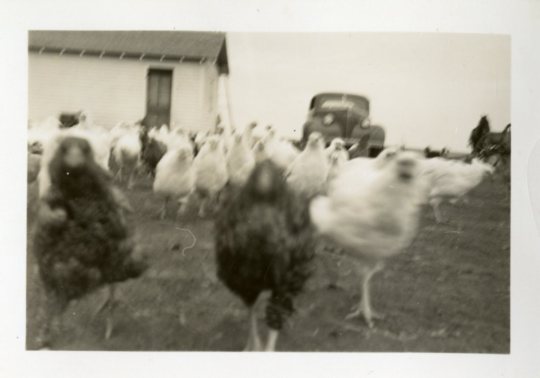
Farming (Chickens)
Record Group 75: Records of the Bureau of Indian Affairs
Series: Photographs
National Archives Catalog
3 notes
·
View notes
Text

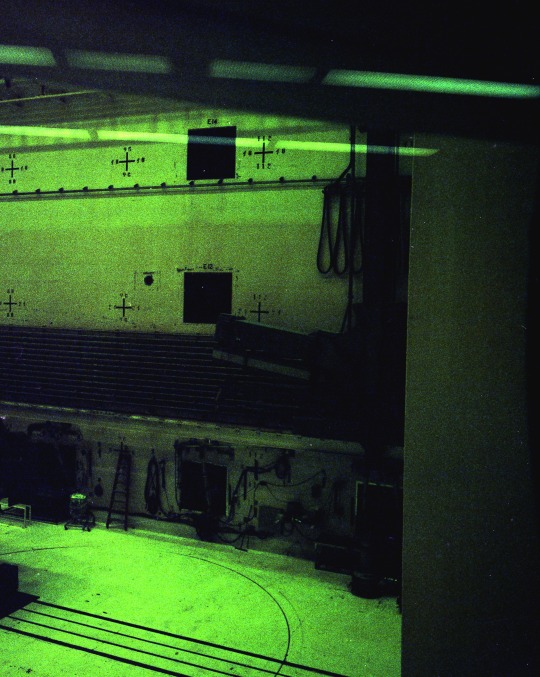
NRDS-BUILDINGS & EQUIPMENT, NEVADA TEST SITE
5 notes
·
View notes
Photo
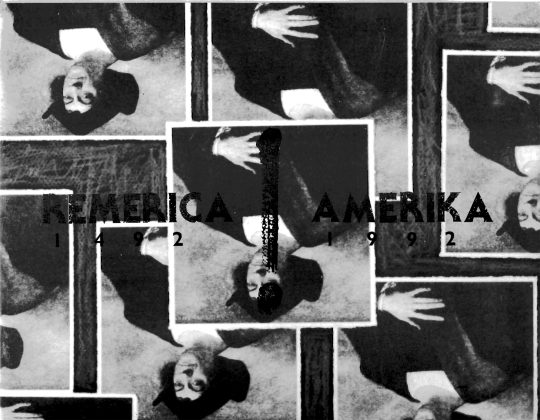
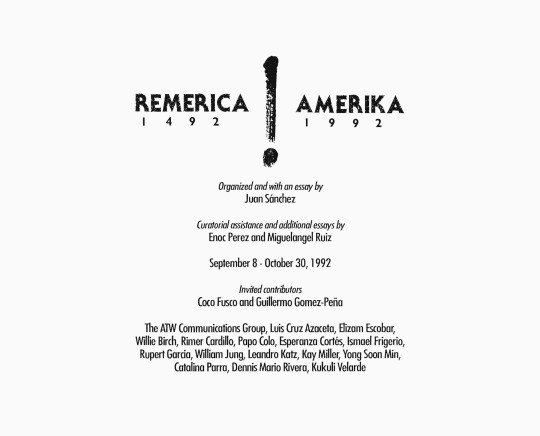

Remerica ! Amerika: 1492-1992, Organized and with an essay by Juan Sánchez, Curatorial assistance and additional essays by Enoc Perez and Miguelangel Ruiz, Invited contributors Coco Fusco and Guillermo Gómez Peña, Hunter College, New York, NY, 1992 (pdf here) [Exhibition: Bertha and Karl Leubsdorf Gallery, Hunter College, New York, NY, September 8 – October 30, 1992] [Materials and documents from the 1992 International Tribunal of Indigenous Peoples and Oppressed Nations, The Freedom Archives, Berkeley, CA]
#graphic design#art#exhibition#indigenous people's day#catalogue#catalog#cover#back cover#juan sánchez#enoc perez#miguelangel ruiz#coco fusco#guillermo gómez peña#bertha & karl leubsdorf gallery#international tribunal of indigenous peoples and oppressed nations#the freedom archives#1990s
21 notes
·
View notes
Text
Explaining Internet Horror Things Badly
Local 58 - the moon is one scary ass motherfucker.
Gemini Home Entertainment - neptune is one scary ass motherfucker.
Mandela Catalog - what if jesus, but like among us.
The Monument Mythos/Nixonverse - THE STATUES ARE MOVING! Anyways, America is a country built on the suffering of oppressed peoples, and-
FNAF VHS - What if FNAF made sense?
Welcome Home - tumblr sexyman muppet feeds people to house (REAL) (NOT CLICKBAIT)
SMILE Tapes - Don't Do Drugs :)
Gilbert Garfield - WHAT THE FUCK IS HAPPENING.
Kane Pixel's Backrooms - 🎶 My life is like a videogame-🎶
Vita Carnis - meat is everywhere.
The June Archive and Restoration Project - Fuck you nintendo, deleting hatena flipnote killed a junillion innocent stickmen
Don't Hug Me I'm Scared - funny muppet become scary muppet.
Mystery Flesh Pit National Park - It is a lovely morning in The Flesh Pit, and you are a horrible capitalist.
VibingLeaf - creepypasta if it was good
TMK - the whole thing was leading up TO A DAMN KARL MARX JOKE!
#jk i love all of you guys#my favs are june archive mon myth gilgarf and vita carnis#i like all of them tho :)#taggin time#local 58#gemini home entertainment#mandela catalog#monument mythos#nixonverse#fnaf vhs#welcome home#smile tapes#gilbert garfield#backrooms#kane pixels#vita carnis#the june archive#dhmis#mystery flesh pit#vibingleaf#tmk#horror#analog horror#cw fnaf#shitposts#100 notes#200 notes#300 notes#400 notes#500 notes
4K notes
·
View notes
Text
Ancient Necklace from Georgia (South Caucasus), c. 100-200 CE: this necklace is almost 2,000 years old; it includes an amulet case with a ram's head carved in amethyst, a garnet-studded perfume vial, and a chain woven from gold
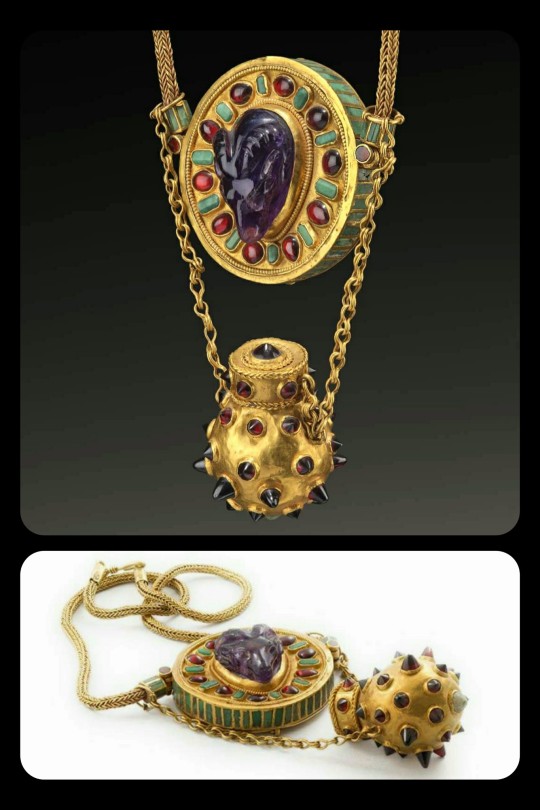
The necklace features two unique pendants:
The uppermost pendant is a hollow, puck-shaped medallion with a removable lid that opens from the front, allowing the pendant to be used as a container/locket (possibly for a textual amulet or similar item); the lid is decorated with an amethyst relief of a ram's head, along with a ring of alternating turquoise and garnet stones. Turquoise tiles can also be seen running along the outer edge of the amulet case.
The second pendant is a hollow, pear-shaped container used for storing perfume or incense. The body of this second vessel (and its cap, which forms the top of the pendant) is decorated with a series of garnet "spikes."
Both pendants are made of gold, and the primary chain is crafted from a series of gold strands that have been twisted into a thick wicker-work pattern.
This necklace was found in the ancient necropolis of Armaziskhevi (located near Mtskheta, Georgia) which is a site that was once used by members of the local aristocracy, including the provincial governors (Pitiakhsh) and high-ranking nobles (Eristavi) of Kartli/Iberia, in what is now the Republic of Georgia.
I know I've mentioned this in some of my previous posts, but just for reference, here is a map showing the location of modern-day Georgia:

Sources & More Info:
Georgian National Museum: Necklace with Medallion & Perfume Vial
Caucasus Travel Guide: Archive of Georgian Artifacts
Georgian National Museum: Archaeology of the Roman Period in Georgia (essay & catalog)
#archaeology#history#artifact#ancient history#jewelry#art#georgia#sakartvelo#iberia#ancient art#gold#caucasus#anthropology#amethyst#turqouise#crafting#necklace#amulet
258 notes
·
View notes
Text
Of course, museums do not produce art; neither do they distribute art. They sacralize it. It’s important to underline the connection between property and the sacred. To sacralize is to exclude; it’s to set something apart from the world, whether because it is sacred to an individual (“private property”) or sacred to something more abstract (“art,” “God,” “humanity,” “the nation”). Any revolutionary regime changes existing forms of property, and the organization or reorganization of museums plays a crucial role in this process, since the forms of property that exist within museums represent the summit of the pyramid. They are the ultimate wealth that police protect, and that the industrious poor can only see on weekends.
Virtually all museums today operate in a way that produces and maintains hierarchy. By archiving, cataloging, and reorganizing the museum’s space, they draw a line between “museum” quality and “non-museum” quality objects. But there is no ultimate contradiction between commoditized art and art considered inalienable and not to be sold, because they are simply two variations of the sacred as radical exclusion. The fact that these objects are surrounded by armed security and high-tech surveillance simply serves to underline to any visitor how much their own creative acts (songs, jokes, hobbies, diary entries, care for loved ones, and precious mementos) are of no particular significance, and therefore, that visitor will need to return to their non-museum life and continue to carry on their “non-inessential” job producing and maintaining the structure of relations that makes museums possible. Much like the cathedrals they were meant to replace, museums are there to teach one one’s place.
In the same way, the art world—as the apparatus for the production of objects, performances, or ideas that might someday merit being sacralized— is based on the artificial creation of scarcity. In the way that police guarantee material poverty, the existence of the art world—in its current form—could be said to guarantee spiritual poverty. What, then, would an abolitionist project directed at the art world actually look like?
David Graeber and Nika Dubrovsky, "Another Art World, Part 3: Policing and Symbolic Order" (2020)
589 notes
·
View notes
Text

MURDERERS' ROW
Third Fleet aircraft carriers at anchor in Ulithi Atoll, 8 December 1944, during a break from operations in the Philippines area. The carriers are (from front to back): USS Wasp (CV-18), USS Yorktown (CV-10), USS Hornet (CV-12), USS Hancock (CV-19) and USS Ticonderoga (CV-14). Wasp, Yorktown and Ticonderoga are all painted in camouflage Measure 33, Design 10a.
Photographed from a USS Ticonderoga plane. Official U.S. Navy Photograph, now in the collections of the National Archives.
Catalog #: 80-G-294131
28 notes
·
View notes
Text
Milestone Monday
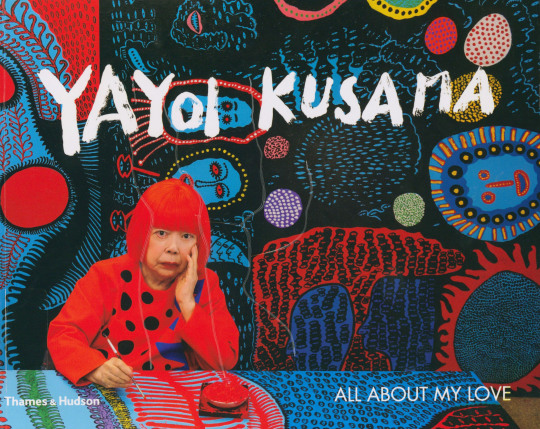

Untitled, 1939
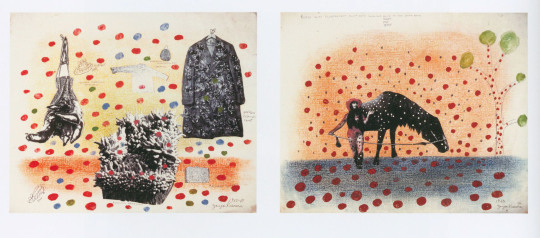
Self-Obliteration No. 1 and No. 2, 1962-67

A Pumpkin, 1999

Women of Shangri-La (Infinity Nets), 2002

Women Wishing for Peace, 2004
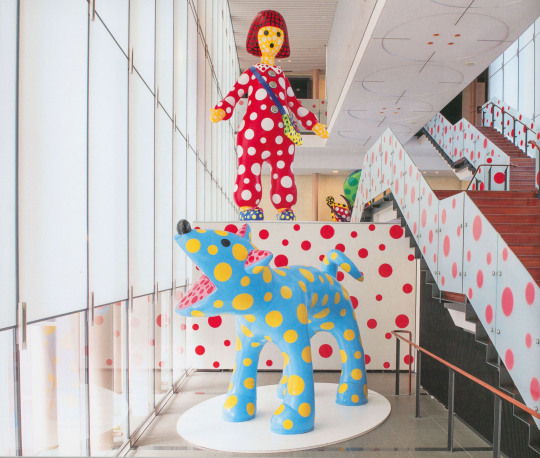
Yayoi-chan & Toko-ton, 2013

I'm Here, but Nothing, 2000/2018

My Heart with Many Worries, 2013

Tomb of Downfall, and my Spiritual Poverty Dominates my Entire Body, 2017
January 22nd is National Polka Dot Day and to celebrate we’re sharing artwork from the Queen of Polka Dots, Yayoi Kusama (b. 1929)! Kusama’s first recorded use of polka dots dates back to around age ten when she covered a drawn portrait of her mother in a field of frantic dots. More than a stylistic choice, Kusama has since shared the use of polka dots reflects the “infinity nets” present in the visual hallucinations she often experiences in relation to her mental illness. Incorporating them into her art became a way for Kusama to share and coexist with the fears prevalent in her life.
Yayoi Kusama: All About My Love, published by Thames & Hudson in 2019, is an intimate overview of Kusama’s life and career documenting the artist’s retrospective exhibition of the same name that was on view at the Matsumoto City Museum of Art in 2018. One of the many exhibition catalogs held within Special Collections, Yayoi Kusama: All About My Love offers nearly 200 color reproductions of Kusama’s work accompanied by numerous photographs of the artist, archival paraphernalia, poetry, interviews and her exhibitions throughout her long career.
Read other Milestone Monday posts here!
– Jenna, Special Collections Graduate Intern
#national polka dot day#yayoi kusama#all about my love#thames & hudson#matsumoto city museum of art#milestone monday
39 notes
·
View notes
Text
We're on a mission to make history even more accessible and engaging for you!
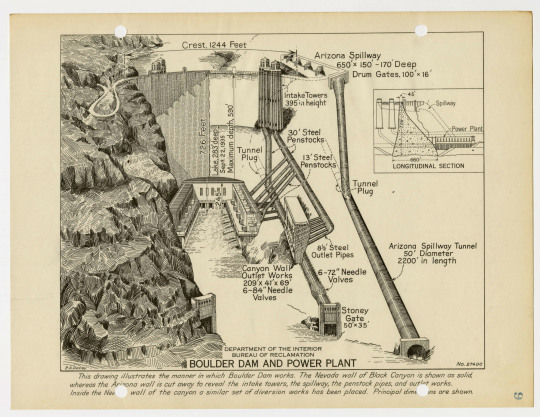
From the towering majesty of the Golden Gate Bridge to the innovative designs of the Hoover Dam, the National Archives Catalog houses incredible records of engineering feats that have shaped our landscape. Discover the stories behind these monumental projects through detailed blueprints, captivating photographs, and personal accounts of the men and women who turned bold visions into reality.
We’re on a mission to make history even more accessible and engaging for you! Have thoughts on how we can improve our Catalog?
Take a moment to fill out our survey: https://www.surveymonkey.com/r/NARAnewcatfb
79 notes
·
View notes
Note
Puerto Rico
Want to search National Archives holdings? Use our online catalog!
Here's a search for "puerto rico."

You might want to narrow your search by selecting filters in the sidebar. For instance, choose "Available to access online" if you're looking for things that are already online.

You can also narrow your search by type of materials, such as photos, maps, sound recordings, or other formats.
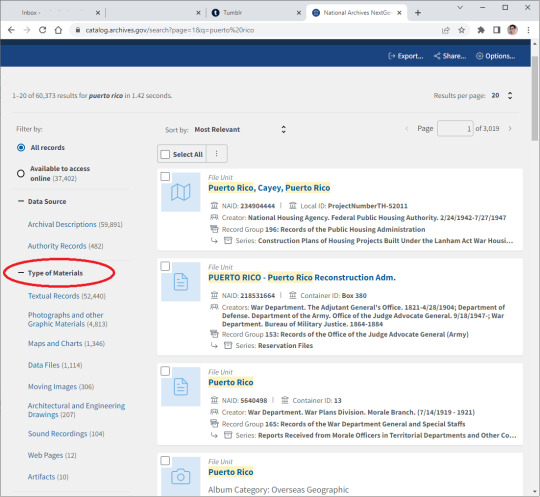
So if we narrow our search results by "Available to access online" and "Photographs and other Graphic Materials" we get this!
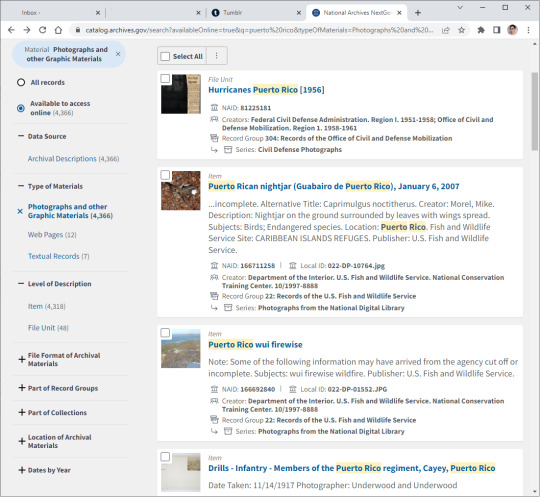
28 notes
·
View notes
Text

Painted Turtles
The creator compiled or maintained the parent series, Photographs from the National Digital Library, between ca. 1998–2011.
National Archives Catalog
#turtles#more than two turtles#a bale of turtles#painted turtles#turtle friday#photographs from the national digital library#national archives catalog
2 notes
·
View notes
Text
El Centro Urbano Presidente Alemán en 1950, un año después de su inauguración. Este conjunto, conocido como Multifamiliar Alemán, fue diseñado por el arquitecto Mario Pani; la vista es desde el cruce de Adolfo Prieto y Parroquia, y hoy a la izquierda se encuentra el templo de la Divina Providencia, construido en los años sesenta.
Imagen: T.W. Kines, National Archives Catalog

228 notes
·
View notes
Link
211 notes
·
View notes
Text

“Maria Martinez,” photograph by William H. Regan, about 1964. Courtesy of the Los Alamos National Laboratory and the Heard Museum (Susan Peterson Collection, Billie Jane Baguley Library and Archives.

In this photograph taken in Santa Fe in 1952, Maria Martinez and Popovi Da, seated front right, observe a demonstration by Bernard Leach (1887-1979) and Shoji Hamada (1894-1978), fathers of the studio pottery movement. Standing against the wall is Georgia O’Keeffe (1887-1986). Heard Museum (Susan Peterson Collection, Billie Jane Baguley Library and Archives.



The exhibition is accompanied by a handsome catalog featuring scholarly essays placing Maria Martinez within the broader story of American art, design and culture in the Modern era.

“Rose B. Simpson’s ‘Maria’” by Kate Russell. Photograph of the 1985 Chevrolet El Camino that Santa Clara Pueblo artist Simpson customized in 2014 with designs inspired by traditional Tewa black-on-black pottery by Maria Martinez (1887-1980). Photo courtesy Kate Russell.
Maria & Modernism – The Heard Museum
An exhibition in Phoenix through July 28 offers a reappraisal of the pioneering American potter.
12 notes
·
View notes